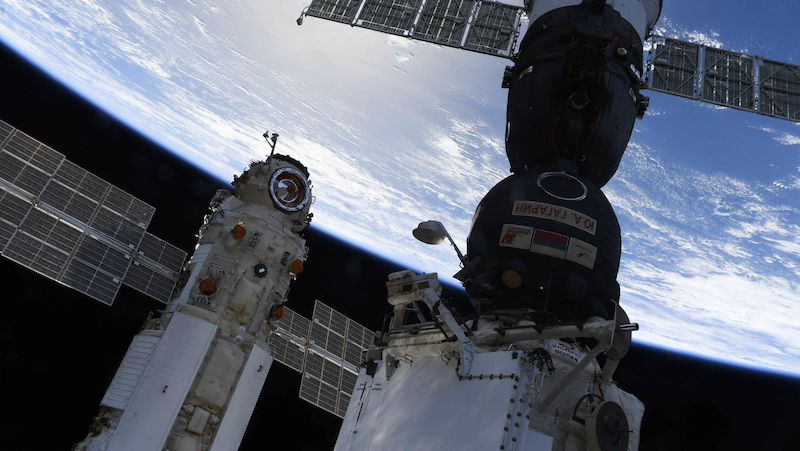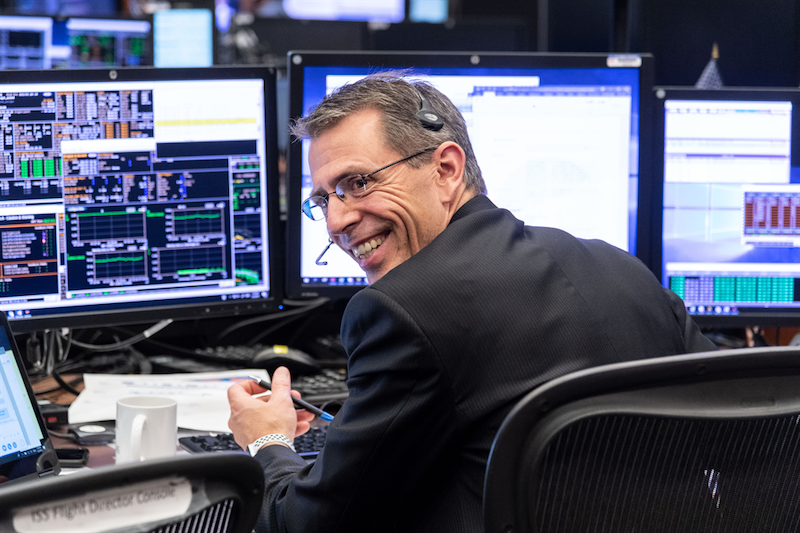
Nauka module mishap
The new Russian research module Nauka successfully docked with the International Space Station (ISS) late last week (July 29). But Nauka accidentally fired its thrusters, sending the space station into a spin. ISS briefly lost what pilots and engineers call attitude control. At first, NASA said on Twitter that ISS had tilted about 45 degrees. Later, it became clear the situation was more severe than NASA had initially reported. A NASA official told the New York Times on August 2:
That’s been a little incorrectly reported.
That statement came from Zebulon Scoville, the flight director who led NASA’s Mission Control center in Houston, Texas, during the July 29 tumbling event. In his Times interview, Scoville described how the ISS spun 1 1/2 revolutions – about 540 degrees – before coming to a stop upside down. The space station then did a 180-degree forward flip to get back to its original orientation.
NASA officials reportedly confirmed the accuracy of Scoville’s statements with Space.com. To provide insight into where “45 degrees” came from, one representative said:
The 45-degree number was initially offered in the first minutes after the event occurred by our guidance, navigation and control officer in Mission Control, but was later updated following an analysis of the actual divergence.
Nauka module sends ISS tumbling
Nauka – which means “science” in Russian – is Russia’s Multipurpose Laboratory Module. The 23-ton module adds a laboratory, additional sleeping quarters and other capabilities to the Russian segment of ISS. Following its July 21 launch, it reportedly encountered some propulsion problems that Russian controllers were able to resolve ahead of its planned docking with ISS. Then came a successful docking, and all seemed well, until the unexpected thruster firing. In a July 30 statement, Roscosmos – Russia’s space agency – said that a software glitch on Nauka was at the heart of the problem, and:
… a direct command was given to fire the module’s engines.
Zebulon Scoville told the New York Times that a caution warning came soon after Nauka’s docking. It was 11:34 a.m. Houston time (16:34 UTC) on July 29. Initially, he thought that the prompt, just two lines of code, might have been a mistake. But NASA controllers quickly discovered that Nauka was doing more than firing. It was trying to pull away from the station it had docked with just moments ago.
Scoville said:
At first, I was like, ‘Oh, is this a false indication?’ And then I looked up at the video monitors and saw all the ice and thruster firings. This is no kidding. A real event. So let’s get to it.
The NASA team had no control over Russia’s Nauka module. The module can receive direct commands only from a ground station in Russia. And, in the moments after the unexpected thruster firing, the next pass over Russia was more than an hour away.
It took 45 minutes for mission controllers in Houston to get ISS back under control. They called on the seven astronauts aboard the station for help. Led by Scoville, the ISS astronauts and NASA ground controllers worked to counteract Nauka’s thrusters. To balance the tilt, they counter-fired thrusters on the Russian module Zvezda and the Progress cargo ship.
As it turned out, after about 15 minutes of fire, Nauka’s thrusters shut off. Scoville says he doesn’t know why they shut off. But it was NASA’s countermeasures that enabled the station to return to a stable orientation.
Scoville added:
After doing that backflip 1 1/2 times around, it stopped and then went back the other way.

All’s well that ends well
NASA held a news conference following the dramatic event to discuss what happened. According to Scoville, the ISS reached a maximum rotation rate of 0.56 degrees per second. The crew members on board, space station manager Joel Montalbano said, were never in any immediate danger during any time of the lost attitude control:
Those numbers representing the change in attitude are correct. We’d reiterate that the maximum rate at which the change occurred was slow enough to go unnoticed by the crew members on board, and all other station systems operated nominally during the entire event.
Scoville has echoed this same testimony and agreed that the safety of the astronauts was never at risk. Moreover, despite the unexpected scare Nauka caused, he wanted to reaffirm his faith in NASA’s partnership with its Russian colleagues. Specifically, he told the New York Times:
I have complete confidence in the Russians. They are a fantastic partnership with NASA and the entire International Space Station program.
Bottom line: Shortly after docking with the International Space Station on July 29, Russia’s new Nauka module accidentally fired its thrusters, sending the space station into a spin.











